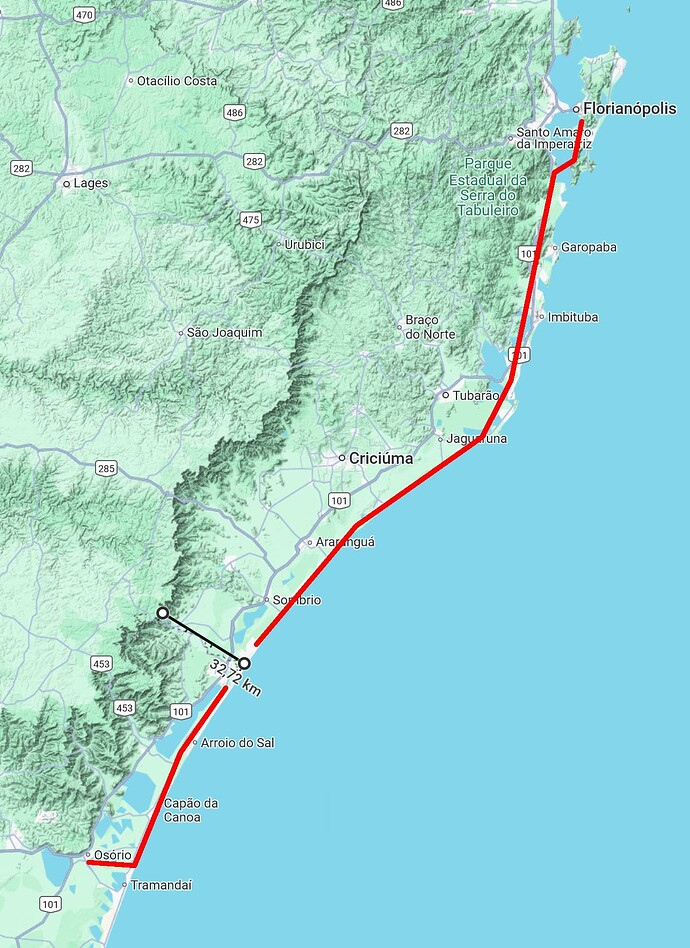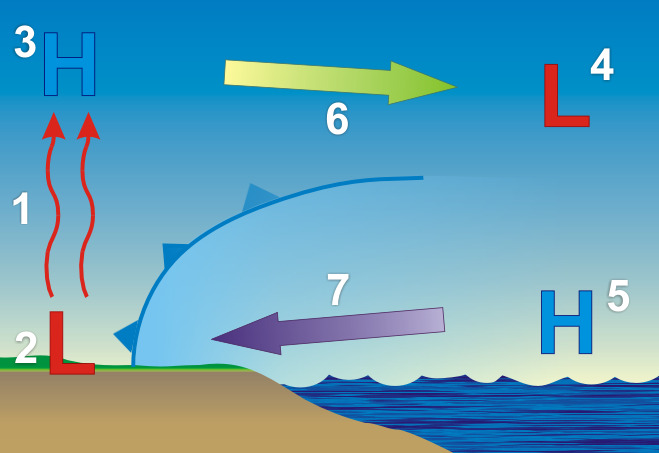Hello,
last sunday I did perform a crossing from Osorio to Florianopolis, two cities located in south of Brazil (they stand around 300km from each other in a straight line) using the Discus 2C sailplane.
I initiated the flight at 14:00pm, wind was blowing from west and velocity was between 30 to 40km/h. I used Real Time and Real Weather.
I did all the crossing basically over the shoreline, where I was having a consistent lift. At first I thought it was some sort of a bug, since I could not understand how could a thermal lift could be extending that way but later a friend of mine, who is a real pilot, told me it could have been a Lee Wave.
The thing is this phenomena hapens here, there is a plateau called Aparados da Serra where elevations range from 1000 to 1600m high and it stands around 30 to 70 km from the seaside.
My question is: Can Msfs 2020 be that accurate?
I recorded a video, now posted in Youtube, and it is a compact version of roughly 30min from the original 2h25min.
https://www.youtube-nocookie.com/embed/Blo3PpGm1zk
3 Likes
Is a Lee wave just another name for a mountain wave, where you get this rising, and falling pattern of wind that extends for hundreds of miles on the downwind side of a ridge?
I’m not a meteorologist, so after reading the OP, had to look it up on Wikipedia. 
Yeah, that’s what I guessed. A good video on these. The start concerns mountain waves.
I’d be very surprised if this is simulated.
Yes, Lee waves are mountain waves.
And I would also be surprised if they are simulated in the MSFS.
2 Likes
The sim certainly simulates, up, and down draughts in mountainous terrain. But I don’t know whether it simulates jump accelerators, or having that pattern of rising, and falling wind for hundreds of miles. I suspect it’s more localised to the terrain.
2 Likes
I do a lot of bush flying in mountainous areas in the sim and yes, the wind absolutely contours the terrain, similar to what you’d expect in real life. I’ve been caught in many a downdraft on the lee side of a mountain pass (even on short final into an airport on a small plateau).
That said, I haven’t tested the extent or structure of the effect, so I don’t know how high it’s going or what the profile/cross-section of the wave looks like. I haven’t yet noticed mountain waves in the flight levels in the Rockies knocking my speed around, if that’s any indication.
1 Like
It would be awesome to hear from the developers what in fact is going on there.
2 Likes
In theory it should be easy to test. Find a ridge line like that, manually configure the wind to flow over the ridge, then approach from the leeward side into the wind, maybe 1000ft above the ridge. What you might see is periodic increase in vertical speed, but my guess is the first thing you might see is a sinker as you are close to the ridge, with nothing at all before that. But I guess being that close you would need to be lower than that.
Waves are not simulated in the sim. Unfortunately for us glider pilots.
We only have a very simple air flow model over terrain causing up/downdrafts, which btw reach way too high above the terrain.
Something i’d hope Asobo will fix down the line, if they would just listen to the feedback and focus more on realistic weather simulation instead of eye candy.
3 Likes
Since it was not mountain waves, could that have been a “Sea Breeze Frontal Boundaries”?
And once again, can Msfs 2020 simulate this phenomena?
I might proffer that it already does, not through direct modeling of the exchange, but through using the forecasted winds aloft, supplemented by any available METARs at the surface. For instance, if you fly in the SF Bay Area late at night you’ll often see the surface winds shift to an offshore flow, while aloft they’re still predominantly westerly.
Edit: Re-reading, you may be asking about the thermal and airmass boundary as it pertains to generating lift? If so, I don’t think you’re going to see that in 2020.
Thanks for you reply, and yes I am trying to understand what kind of lift I did experience in that situation.
Did you experience a loss of airspeed in a downdraft or increase ?
A year ago, when I tried that out, the flight dynamics was not modeled correctly by far.
My faint hope is in the sim 2024.
Bye, Walter
Generally it’s a loss of airspeed if you fight a downdraft, but it’s dependent on whether you’re fighting it, retrimming, maintaining level altitude and/or altitude, changing power, etc.
Same goes for updrafts. I can always tell when I’m in one in the sim, because I’ll struggle to maintain level and my indicated airspeed will shoot up. Not too different from bucking mountain waves.
2 Likes
Seems to work now. I’ll try it later.
Thanks, bye walter


